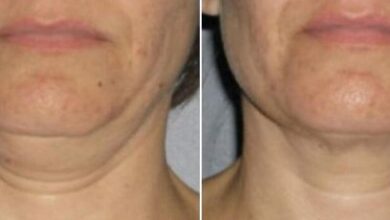Everything You Need to Know about the Eye Test Air Puff

Do you dread going to the optometrist for an eye test? The thought of having a puff of air shot into your eyes might make you anxious, but fear not! In this blog post, we will discuss everything you need to know about the eye test air puff. From what it is and how it works to its potential side effects, we’ve got you covered.
What is eye test Air Puff?
An Eye Test air puff is a diagnostic tool used to measure the intraocular pressure of your eyes. It’s also known as non-contact tonometry or NCT. The test involves sitting in front of a machine with a small nozzle attached to it that releases quick bursts of air onto the surface of your eye.
The instrument measures how much resistance there is against the cornea, which can help diagnose conditions such as glaucoma and ocular hypertension.
One benefit of using an air puff instead of other methods like contact tonometry is that it doesn’t require any numbing drops, unlike other tests that use probes or instruments placed directly on the eye.
While some people may find this test uncomfortable due to sudden bursts of air into their eyes, rest assured that it’s a safe and effective way for doctors to monitor your ocular health.
How are Air Puffs Used in the Eye Test?
Air puffs are commonly used in eye tests to measure the intraocular pressure, or IOP. This is an important part of a comprehensive eye exam because it can help detect glaucoma, which is a condition that damages the optic nerve and can lead to vision loss.
During an air puff test, the patient sits in front of a machine with their chin placed on a rest. The technician then aims a small puff of air at the surface of each eyeball one at a time while measuring the pressure inside the eye.
The sensation may be uncomfortable for some patients but only lasts for about two seconds per eye. It’s essential to remain still during this procedure to ensure accurate readings.
It’s worth mentioning that air puff tests are quick, non-invasive and painless compared to other methods used in measuring IOP such as tonometry where your eyes come into contact with various instruments.
Air puff tests provide valuable information that helps your optometrist determine if you have any underlying problems related to your eyes’ health; hence they play an integral role in maintaining good ocular health throughout life.
What are the Side Effects of Eye Test Air Puff?
While air puff eye tests are generally safe and non-invasive, there are a few side effects that patients may experience. One of the most common is discomfort or mild pain in the eye after the test.
Another possible side effect is temporary blurriness or haziness of vision. This can be alarming for some patients, but it typically resolves within just a few minutes. In rare cases, however, more serious vision problems can occur as a result of an air puff test.
Some people may also experience an increase in intraocular pressure (IOP), which could potentially lead to glaucoma if left untreated. However, this risk is extremely low and only affects a very small percentage of individuals who undergo air puff testing. Read more…
It’s worth noting that these potential side effects are quite rare overall – most people who have an air puff test will not experience any negative effects at all. Nonetheless, it’s always important to talk with your eye doctor about any concerns you may have before undergoing any kind of eye exam or procedure.
Conclusion
The Eye test air puff is a crucial procedure for detecting and diagnosing several eye conditions. It is painless, quick, and non-invasive. The results obtained from this test enable an ophthalmologist to diagnose glaucoma, ocular hypertension, and other eye problems that could lead to permanent vision loss if left untreated.
It’s important to note that while the air puff test may not be everyone’s favorite part of an eye exam due to its uncomfortable nature, it can save your sight in the long run. Regular checkups with your optometrist or ophthalmologist are vital for maintaining healthy eyesight.
If you’re due for an eye examination soon or have concerns about any changes in your vision, schedule an appointment with your local optometrist or ophthalmologist today. Remember: prevention is better than cure!




